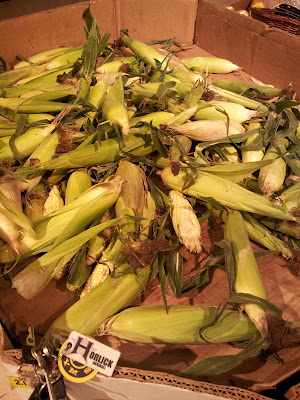 Cuticle Layer of a Plant - The cuticle layer of a plant is a waxy outer surface which prevents a stem or leaf from drying out (desiccation). This leaf has a waxy outer layer on the leaf, which is the cuticle layer. The cuticle layer is also an adaptation of a plant.
Cuticle Layer of a Plant - The cuticle layer of a plant is a waxy outer surface which prevents a stem or leaf from drying out (desiccation). This leaf has a waxy outer layer on the leaf, which is the cuticle layer. The cuticle layer is also an adaptation of a plant. Autotroph- An autotroph is an organism that produces its own organic energy without consuming another organism (producer). Plants are a good example of autotrophs because they create their own energy through photosynthesis.
Autotroph- An autotroph is an organism that produces its own organic energy without consuming another organism (producer). Plants are a good example of autotrophs because they create their own energy through photosynthesis.  CAM Plant- A CAM Plant is an acronym for Crassulacean Acid Metabolism Plant which is an adaptation for photosynthesis in plants in arid (dry) conditions. The stomata in the leaves collect CO2 during the night to be used for photosynthesis during the day. The pineapple is an example of a CAM Plant.
CAM Plant- A CAM Plant is an acronym for Crassulacean Acid Metabolism Plant which is an adaptation for photosynthesis in plants in arid (dry) conditions. The stomata in the leaves collect CO2 during the night to be used for photosynthesis during the day. The pineapple is an example of a CAM Plant. C3 Plant- A C3 plant is a plant that uses CO2 in photosynthesis to form a 3-Carbon compound in the Calvin Cycle, or the first step, in photosynthesis. Potatoes are an example of C3 plants.
C3 Plant- A C3 plant is a plant that uses CO2 in photosynthesis to form a 3-Carbon compound in the Calvin Cycle, or the first step, in photosynthesis. Potatoes are an example of C3 plants. C4 Plant- A C4 Plant is a plant that uses photosynthesis to form a 4-Carbon compound in the Calvin Cycle.Corn (Maize) is an example of a C4 Plant.
C4 Plant- A C4 Plant is a plant that uses photosynthesis to form a 4-Carbon compound in the Calvin Cycle.Corn (Maize) is an example of a C4 Plant.
The Hot Zone Part 1
This book holds my attention better than most books I've read! Yes, the author gives a lot of detail, but it helps to elaborate these stories of how contagious and how the chain of contraction of the virus was transferred. I think that a lot of people who had experiences with the virus are extremely lucky to tell a story about it. The first story with Monet sets a disgusting truth of how brutal the virus is. I get nervous just reading about it! I learned that Level 4 viruses are so contagious that it is hard to believe that they can spread through the air. The monkeys that were healthy got infected just by breathing in the same air as the infected ones! That is unreal! I think that this story itself sets in an unbelievably scary thing to think about, However the Ebola River chapter strings out the virus through an unprotected population of humans, who are helpless against the virus. That is the scary truth of what can happen to humans in civilized communities. I am still left to ask why didn't the cave in Africa, which was responsible for multiple cases of the virus, infect the animals in Johnson's study? What causes the cave to infect at one point in time, but not at another? Did the virus just disappear? Or did it die out or go "dormant"?
I also think this is one of the best books I've read for school. The people involved are, indeed, lucky to live. I also really want to know why the marburg virus wasn't found in the cave during Johnson's study. I don't think the virus could just disappear, but I wouldn't have thought that it went dormant. That's a good thought.
ReplyDelete